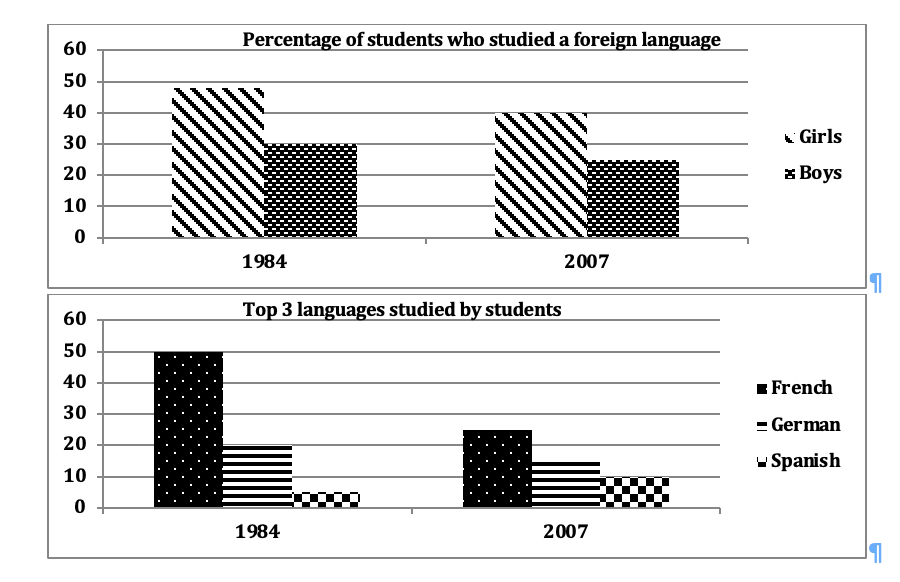The two bar charts show the proportion of 14-16 year-old students studying a modern foreign language in an English speaking country, and the top three popular foreign languages. Summarize the information by selecting and reporting the main features and make comparisons where relevant.

Graph 55 from our book
The given bar graphs illustrate the percentage of boys and girls of 14-16 year age group studying foreign languages, and the top three foreign languages opted by those children of an English speaking country.
Overall, it is clear that more girls than boys studied foreign languages. Also, while the students choosing French and German decreased, those studying Spanish increased in the given time.
Just under 50% girls and 30% boys studied foreign languages in 1984. This number fell among both genders and in 2007, 40% girls and approximately 25% boys were studying foreign languages.
In 1984, French was the most popular language and was studied by 50% students. The percentage of students studying French nearly halved and became about 25% by 2007. German also lost popularity as the proportion of students studying German fell from 20% to 15% over the given period. Spanish was the least popular language in the given two years, but surprisingly it is the only language whose popularity grew over time. In 1984, 5% students studied Spanish but 10% opted for Spanish in 2007.


Happy to find such help from you guys